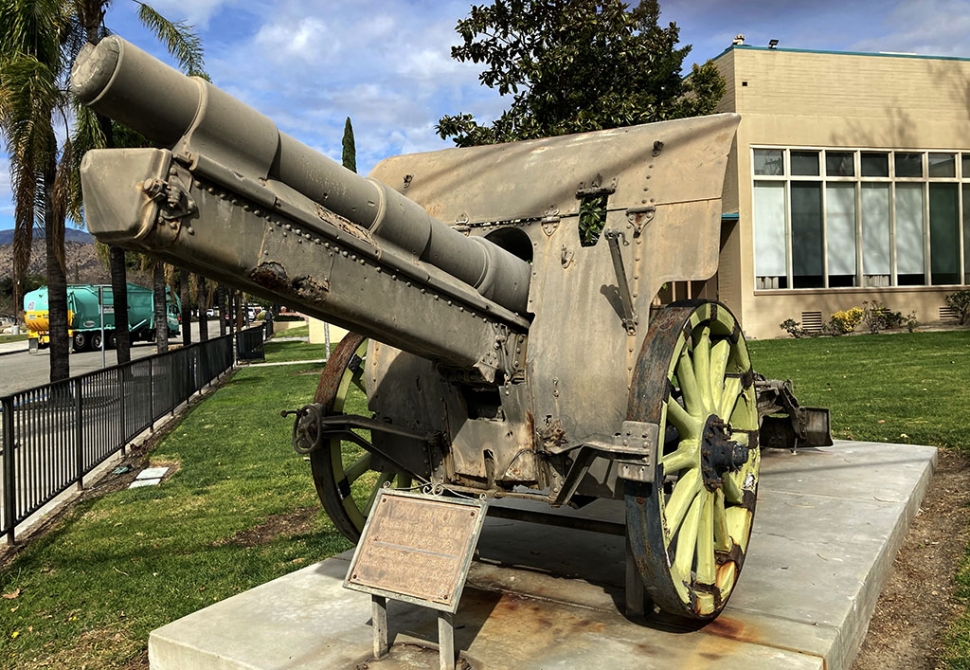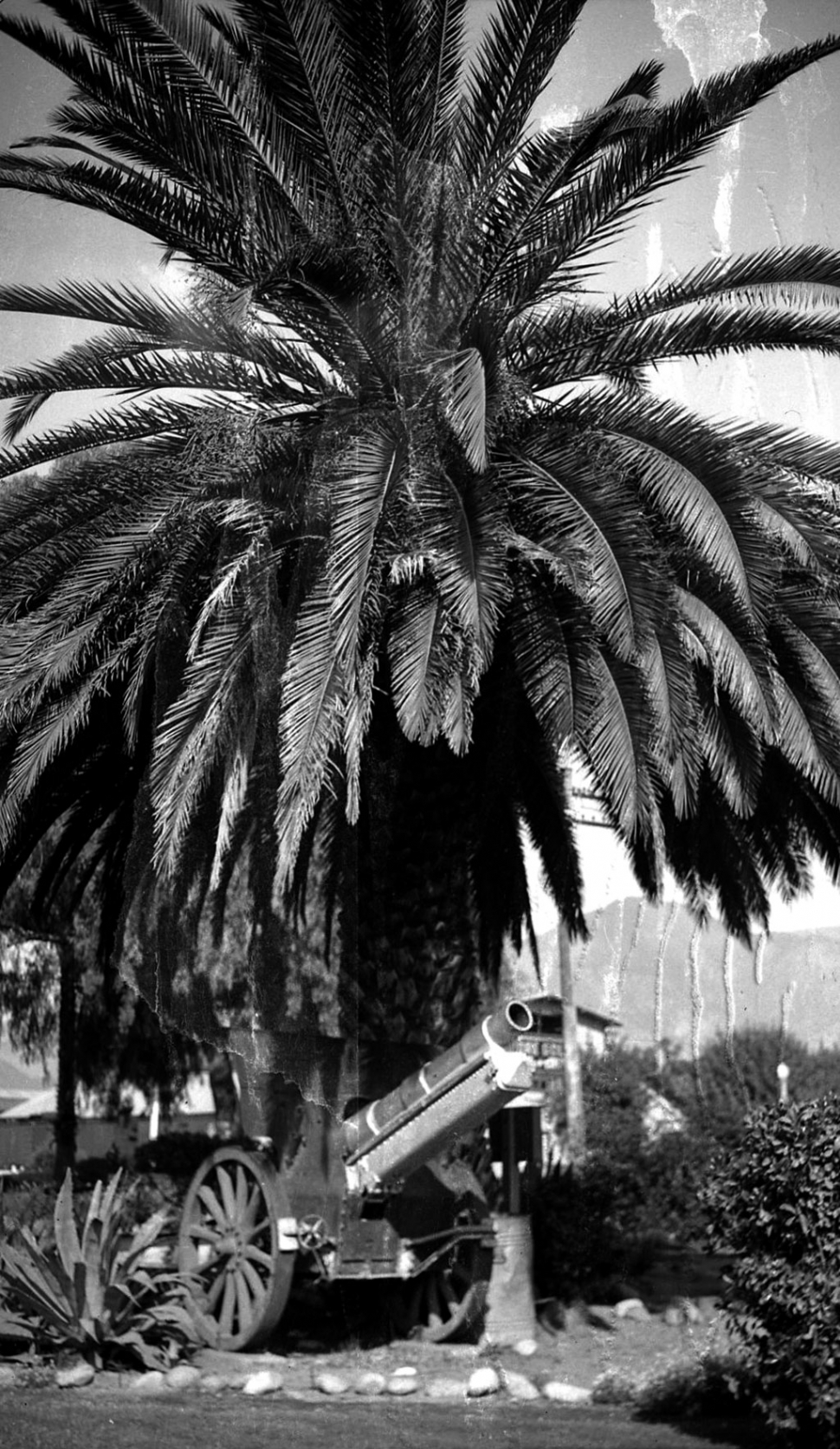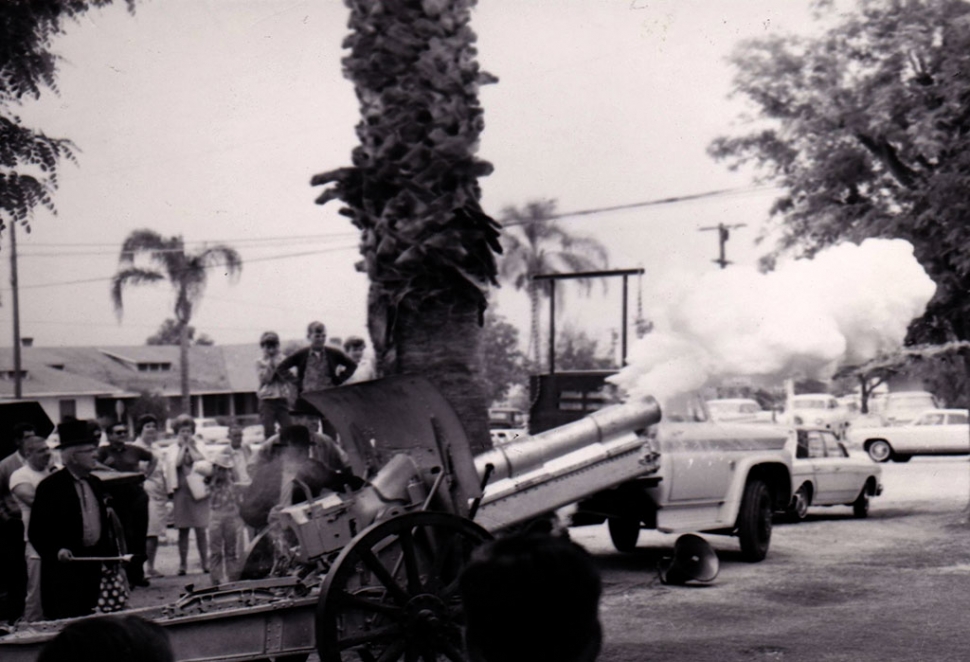|
History of the Fillmore Cannon
 After the 1994 Northridge Earthquake the cannon was moved and now sits in front of the Fillmore Veterans Memorial Building on 2nd Street. The plaque reads “W.W.I Cannon Donated by the U. S. Govt. to the City of Fillmore in 1921. Dedicated to all the men and women who serve their country. W.F.W. 9637 – 2001”. Photos courtesy Fillmore Historical Museum. By Anonymous — Wednesday, February 10th, 2021
 The Canon circa 1935.  The Veterans Service Club formed in 1927 in Fillmore, and in July 1928 the Veterans Service Club ordered a cannon as a gift to Fillmore from the Rartian Arsenal in New Jersey. Pictured above is Len Hawthorn firing the Howitzer in 1979. Courtesy Fillmore Historical Museum The Fillmore cannon? Well, actually, it’s not. It’s a howitzer, probably of French manufacture based on German plans. So how did it get to Fillmore? In January 1927, a group of Fillmore veterans formed the Veteran’s Service Club. Membership was open to “all men who honorably served in the army, navy or marine corps of the United States or her allies as well as those who have served this country in former conflicts.” The first president of the organization was R. A. Fremlin, who served in the British armed forces during World War I. The American Legion accepted only those who had served in the US military. The Club grew from a charter membership of 35 to 134 by the end of 1927. The group was active in the improvement of Fillmore, taking on sponsorship of the city park which be created near the Southern Pacific Depot between Main and Santa Clara Streets. As a gift to the town the VSC ordered a “cannon” from the Raritan Arsenal in New Jersey. As it was war surplus, the “cannon” itself cost them nothing, but they had to pay $150 in for shipping. In July 1928, the “cannon”, a 150mm howitzer arrived was installed in the City Park which at the time was the area in front of the current City Hall. The “cannon” was not the only thing the VSC were doing in 1928 (although some of their plans were interrupted by the sudden collapse of the St. Francis Dam on March 12/13). They were the sponsor of the spring and fall flower shows, they put on several stage plays. To complete the year, they donated and installed the neon “Fillmore” sign that still can be seen on Central. The “cannon” was a “mobile” piece and on at least two occasions traveled. One story is that in the early 1950s, some fun-loving Jaycees (Junior Chamber of Commerce) moved it to the Wm L. Morris lot, then on Central and Santa Clara. No damage was done and the cannon was returned to its home in the park. It was a different story in 1974 when a “local prankster” hooked the howitzer up to his pick up and towed down the street. The wheels of the venerable gun broke under the strain. Retired cabinet make Fred Barger was commissioned to repair the wheels, which he did at no charge. The City Works department placed it on the southwest corner of the City Park so visitors were greeted by the “cannon” as the drove up Central Avenue. The 1994 Earthquake changed many things and so it was with the “cannon”. With the construction of the new City Hall, the “cannon” lost its home. It was also in need of some TLC. Ralph Rees and Basil Dalsem undertook the job of restoring the cannon and when finished, it found its new home at the Veteran’s Memorial Building on 2nd Street where it remains. |
